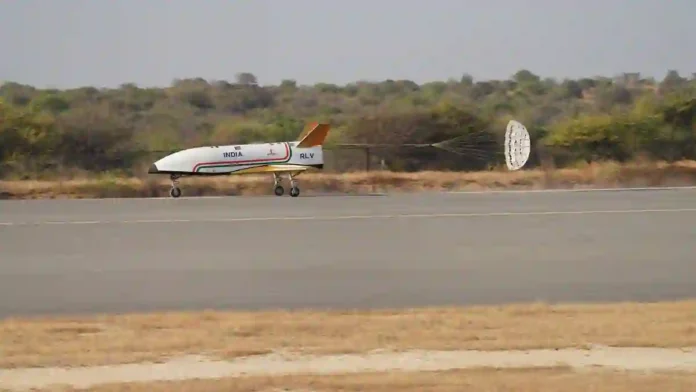ISRO on Sunday successfully conducted the ‘Reusable Launch Vehicle Autonomous Landing Mission’ in Karnataka’s Chitradurga.
The Indian Space Research Organisation (ISRO) successfully conducted the Reusable Launch Vehicle Autonomous Landing Mission (RLV LEX) from the Aeronautical Test Range (ATR) in Karnataka’s Chitradurga Sunday morning.
“In a first in the world, a winged body has been carried to an altitude of 4.5 km by a helicopter and released for carrying out an autonomous landing on a runway,” the ISRO tweeted.
According to a statement by the space agency, the Reusable Launch Vehicle (RLV) took off at 7:10am with a Chinook Helicopter of the Indian Air Force as an underslung load and flew to a height of 4.5 km.
The statement said RLV performed approach and landing manoeuvres using the integrated navigation, guidance and control system and completed an autonomous landing on the ATR airstrip at 7:40am.
Read More – Russia to transfer technology of Zircon/Tuition hypersonic cruise missile to India for BrahMos-2(K) missile
Read More – How To Become Rich Financially
“The autonomous landing was carried out under the exact conditions of a Space Re-entry vehicle’s landing —high speed, unmanned, precise landing from the same return path— as if the vehicle arrives from space,” the statement added.
The Indian Air Force (IAF), Centre for Military Airworthiness and Certification (CEMILAC), Aeronautical Development Establishment (ADE), and Aerial Delivery Research and Development Establishment (ADRDE) also contributed to the test.
What is Reusable Launch Vehicle or RLV?
According to the ISRO, RLV is essentially a space plane with a low lift to drag ratio requiring an approach at high glide angles that necessitated a landing at high velocities of 350 kmph. LEX utilized several indigenous systems. Localized Navigation systems based on pseudolite systems, instrumentation, and sensor systems, etc. were developed by ISRO.
Sources- Hindustantimes
Read More – Indian Army Signs 6000 Crore Deal For Akash Air Defence Missile System




